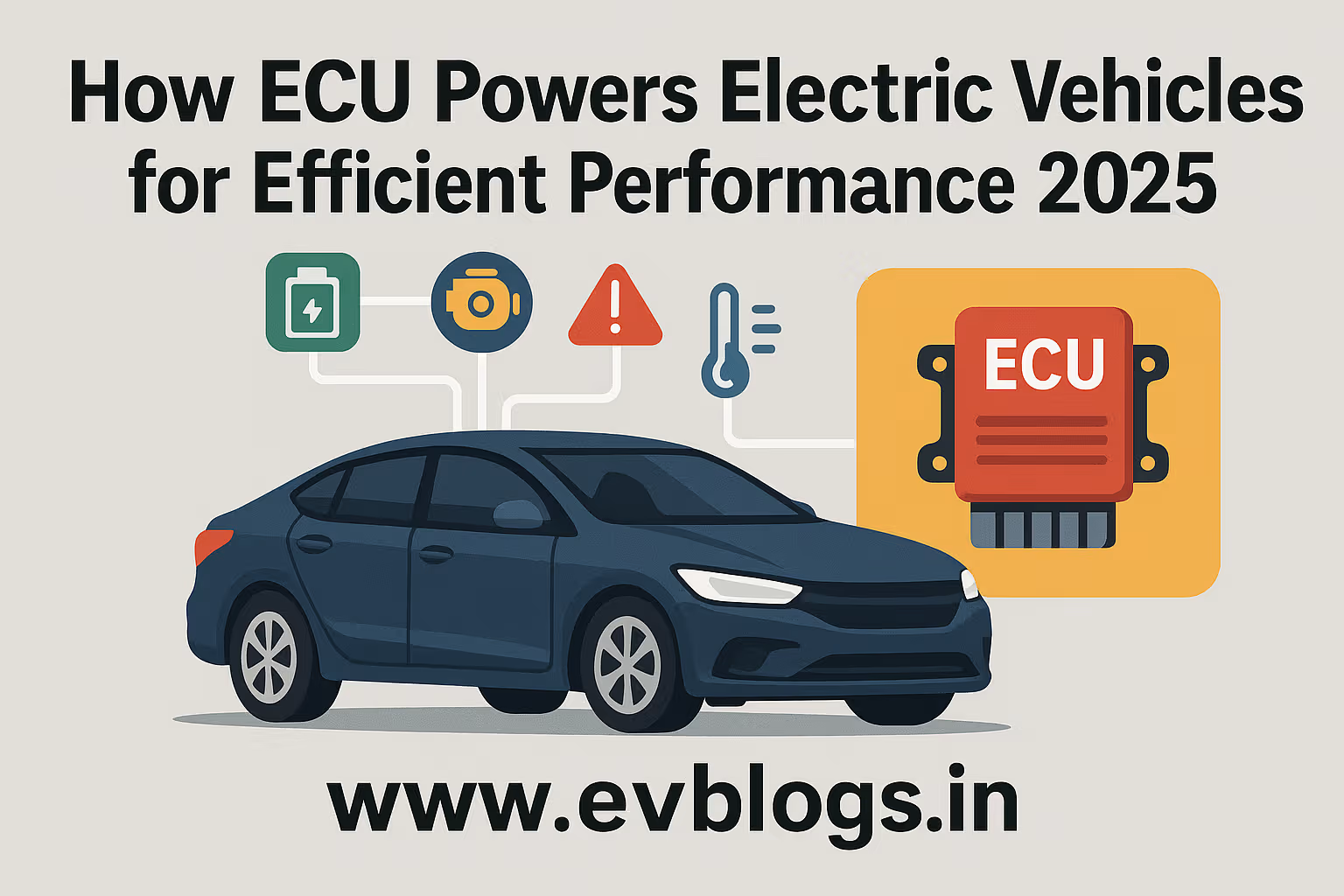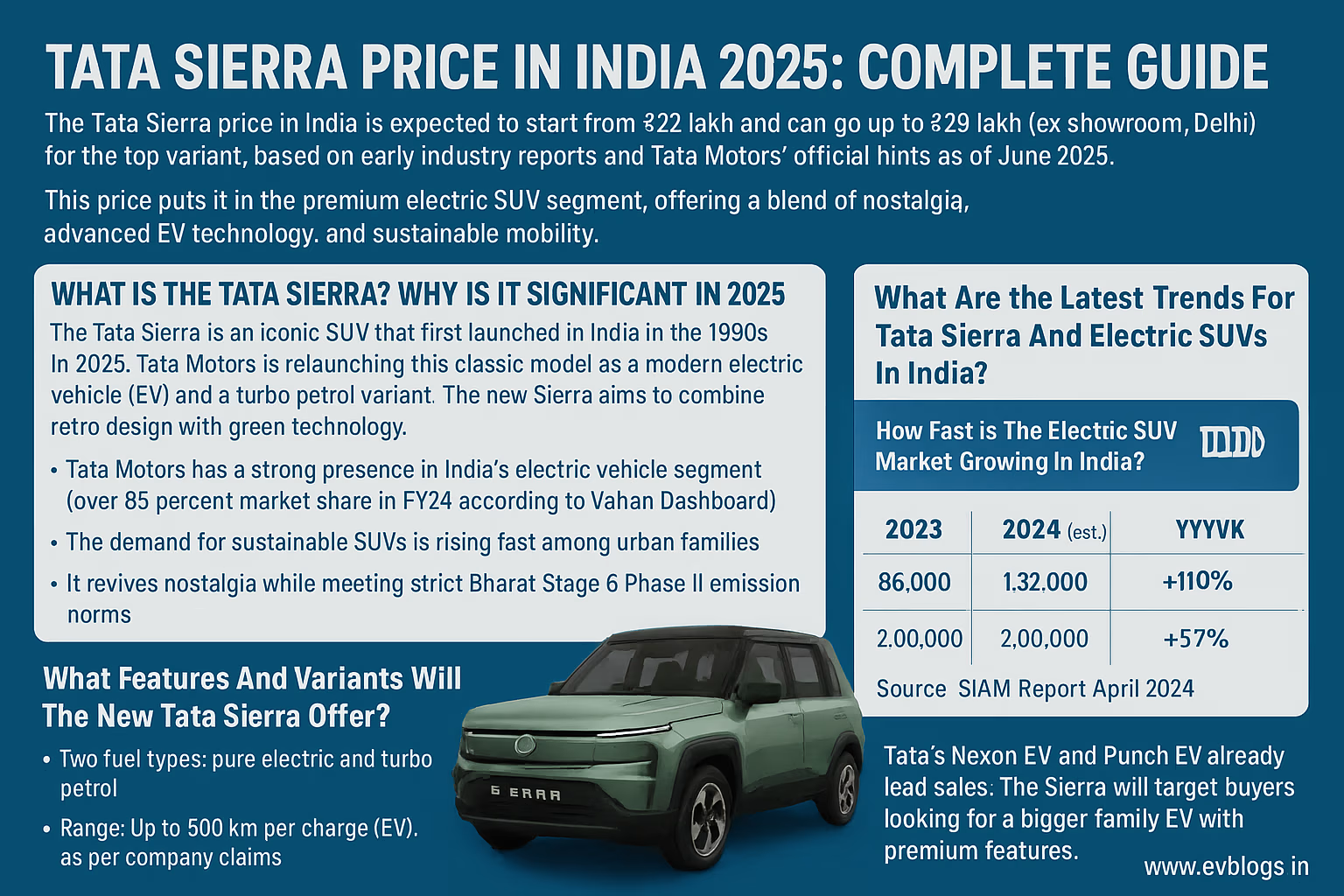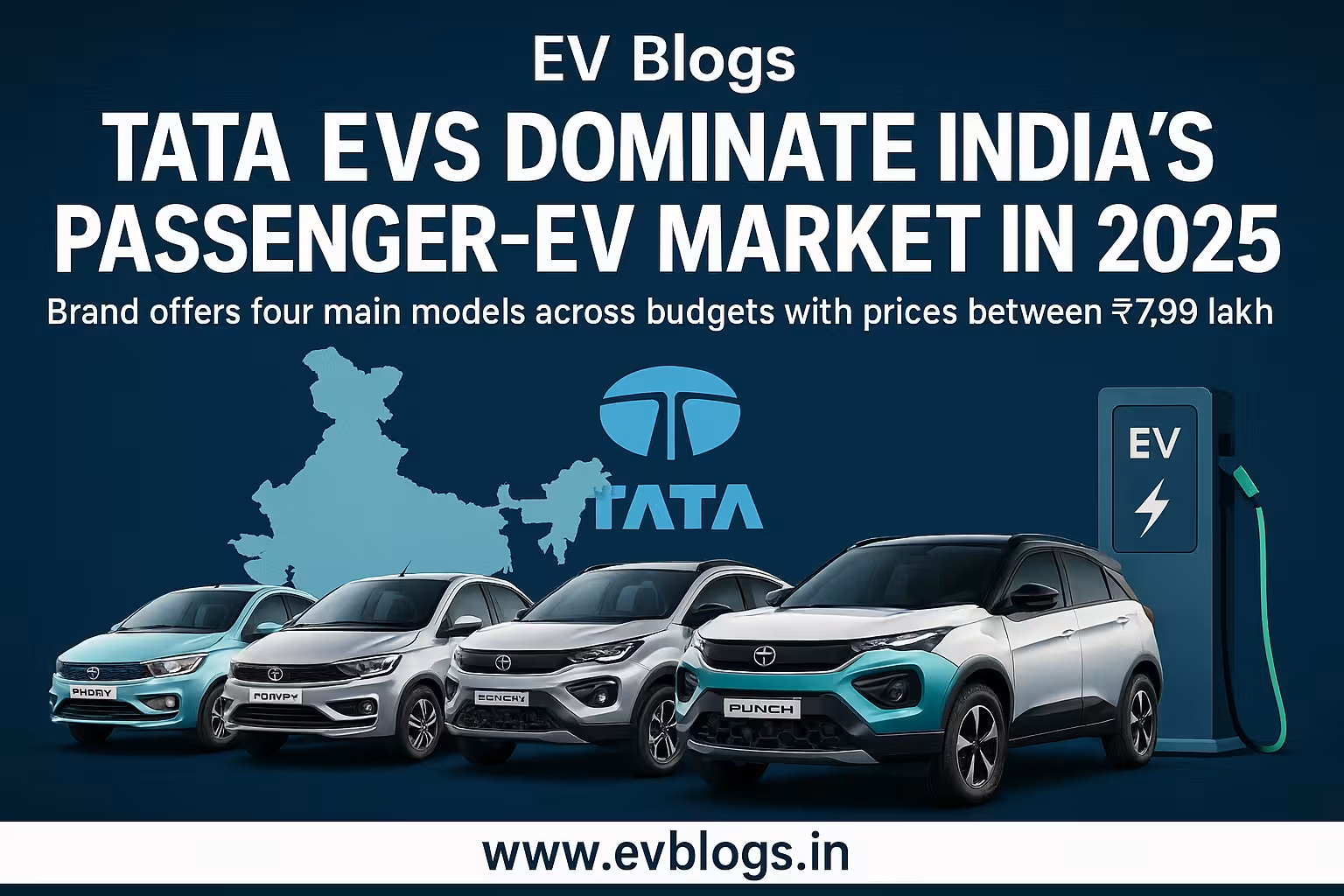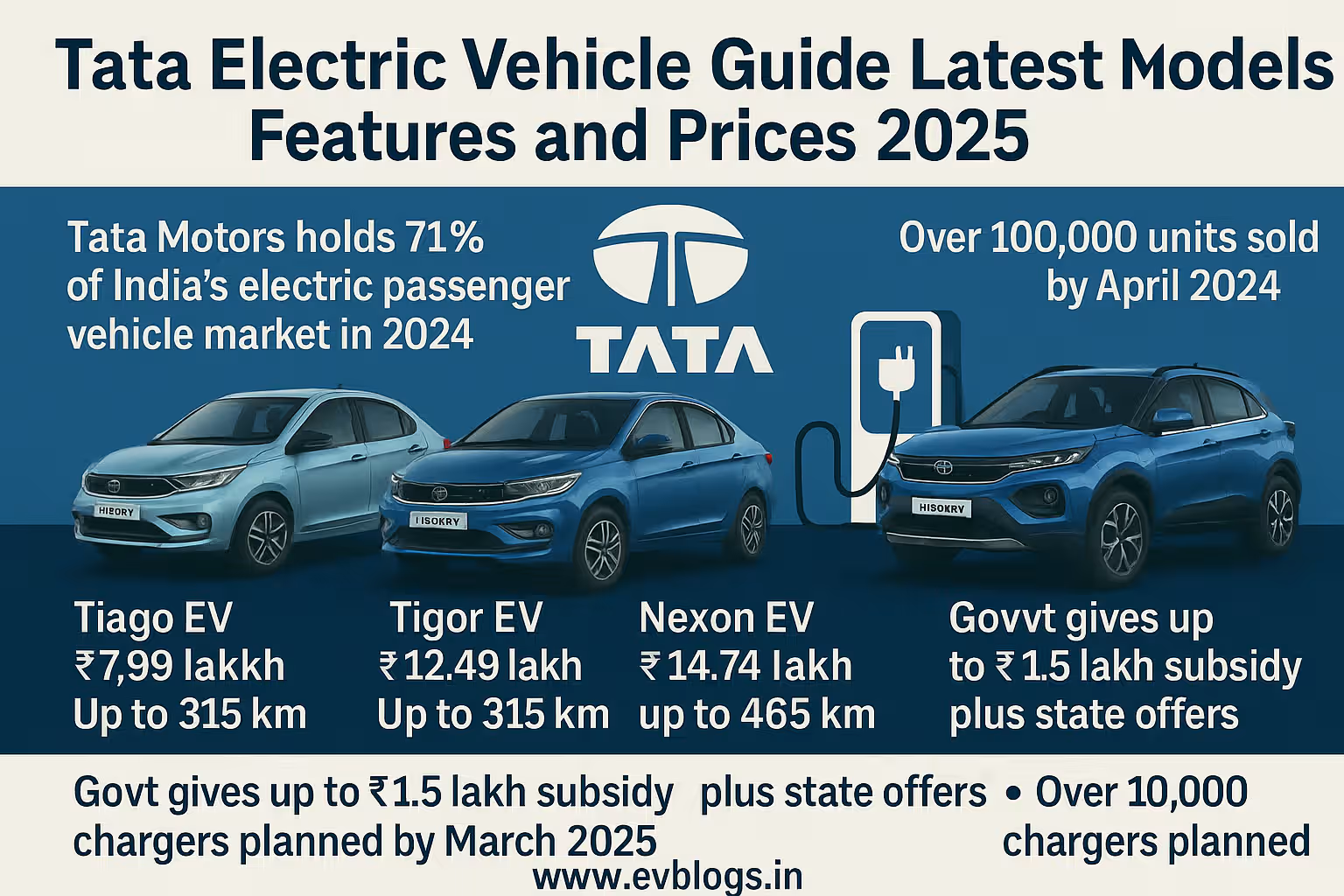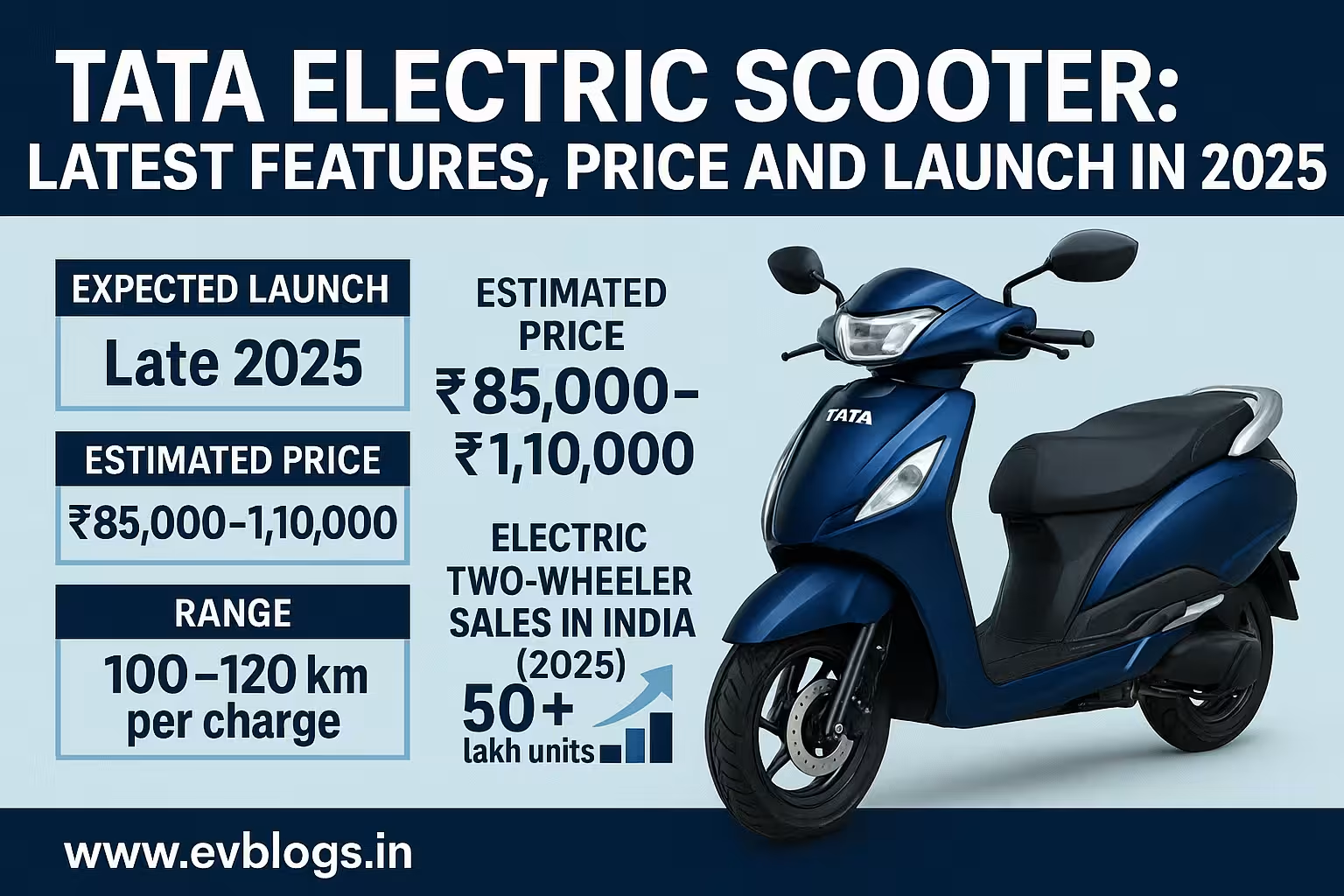Hedhvick Hirav
Hedhvick Hirav is a dedicated EV researcher and editor with over 4 years of experience in India’s growing electric vehicle ecosystem. Their contributions have been recognized in leading sustainability publications and automotive journals.
Summarize & analyze this article with
Choose an AI assistant and open this article directly:
Tip: if the AI doesn’t fetch the page automatically, paste the article URL manually.
Introduction: Myths and Indian electric vehicle revolution Beneath the mist
India is experiencing a revolutionary transformation taking place in the autom:* Industry. The electric vehicles (EVs) have gained popularity due to the aggressive governmental goals, improved infrastructure and the flourishing interest in them by consumers. In 2024, India was selling more than a million EVs, and it is projected that by 2030 up to 30 percent of all the new car sales can be electric.
Still as much as there are with the emerging technologies, there is a lot of misinformation and myths that has found a way to distort the truth. A majority of Indian customers feel reluctant to conceive electric cars due to the problems that exist more in perception rather than reality. It is getting to 2025 and we have to differentiate the myth and reality- helping buyers to make a correct decision, basing on facts, and not based on rumors.
It is an end to end guide, which demystifies ten of the most popular myths regarding electric cars in India with real facts, recent data, and the expert opinion adjusted to Indian realities.
Myth #1 Electric Cars are prohibitively expensive to the most Indians
Fact Initial Costs Are declining-And Lifetime Savings Mount-up
Reality Check:
Even though the initial EVs were extremely costly due to imported batteries, and low production numbers, things have changed:
- Price Parity: By 2025 a range of the mass-market EVs (e.g. Tata Tiago EV, MG Comet) will start at 8 lakh ex-showroom equivalent to petrol/diesel hatchbacks.
- Government Subsidies: FAME-II subsidies (upto 1.5 lakh off) and then on the same subsidies by the state government on it also.
- Lower Running Cost: Evs are economical to run with 1-1.5/km as compared to 6-8/km on petrol cars.
- Low Maintenance: Since it has fewer moving parts, there is not as much maintenance to carry out-no oil changes or exhaust fixes.
Expert Insight:
A CEEW report (2024) has reaffirmed this statistic, which indicates the total cost of ownership of an entry-level electric vehicle is already reduced as compared to ICE equivalent models in certain states as, Delhi and Maharashtra even after five years under the ownership.
Myth 2: Indian roads are not right fitted to Electric Cars
Fact: New EVs Local Route and Climate Specific
Reality Check:
The Indian roads are diverse-from the highways to the pot hole ridden city roads. Big manufacturers are now customizing or developing their EVs to face the following challenges:
- Ground Clearance: Most of the Indian EVs sport ground clearance of 170-190 mm; Tata Nexon EV is 205 mm.
- Good Suspension: Cars like Mahindra XUV400 are hit with varying levels of terrains.
- Tropical Battery Management: Tropical batteries essentially employ the use of higher temperature thermal management systems to keep batteries healthy.
Practical Tip:
Buy models that have been tested under local conditions or that have service centres in the neighbourhood to rest easy.
Myth 3: Charging Is Painful-There Are Not Enough Charging Stations
A Fact: Charging Infrastructure Is Growing Rapidly
Reality Check:
| Year | Public Chargers | Fast Chargers | Major Highways Covered |
|---|---|---|---|
| 2022 | - 2,500 | - Apache 400 | Minimum |
| Around mid-2024 | Around 12,000 | Around 2,200 | Any major corridors |
| Target 25 | 4000 | 20000 | Much ground |
- Home Charging to Everything: More than 80 percent of clients in the cities charge their vehicles at home using the standard sockets overnight.
- Fast Charging Networks: One of the companies that have expanded to Tier-II cities are Tata Power EZ Charge and Ather Grid.
- Highway Infrastructure: NHAI is planning to install charging points on the national highway by 2025, and this plan is likely to have 50 km of the length.
Use-case Comparison:
- City Commuter (30 - 40 km): One has to charge the battery at home only once in a week.
- Long roads: Way to locate the available chargers on apps that provide the instant availability.
Myth 4: Electric Cars is such Distance Inconvenience
Fact: Existing EV Ranges already meets Daily Mileage-and more
Reality Check:
Most Indians move less than 50 km per day. These are what the then popular models offer:
| Model | Real life Range (km) |
|---|---|
| Between 465 Tata Nexon.ev | |
| MG ZS EV | As high as 420 |
| Hyundai Ioniq 5 | As much as 480 |
| As many as 250 Tiago.ev |
The actual range is dependent upon the driving habits and AC condition.
Tips: To obtain EVs, the range that is currently available is sufficient in the majority of city commutes and journeys of weekend nature (<300 km). When travelling at distance (> 500 km) make schedule stops as you would do with a CNG car.
Myth 5: There Is No Reliability In Electricity Supply- How Will I Charge?
Fact: Home and Public Charging options Reduce Power Cuts
Reality Check:
Power is stable in the majority of the cities. For others:
- Backup opportunities: Battery charging of backup at night at home on inverter/ solar charge.
- Automatic resumption of charging in light of outages can be accomplished by some of the chargers which are Smart Charging Solutions.
- Backup Power: A lot of stations have DG sets or battery backup.
Expert Insight:
Studies reveal that there is no frequent power shutdowns and this can disrupt the usual patterns of overnight charging- especially in the metro cities.
Myth 6- electric Car Batteries are not durable Myths about how fast the battery can function.
The matter of fact is that New Batteries are built to withstand Years.
Reality Check:
- Warranty Coverage: The Warantiy coverage of most brands was 8 years/160,000 kilometers battery coverage (whichever came first).
- Battery Degradation Rates: Lithium-ion battery maintained under proper conditions could reasonably continue to hold a charge on battery capacity approximating 1015 percent or better after 8 years of normal use capacity.
- Plummeting Replacement Costs Reducing: The price of battery packs has already dropped over 70 percent since 2017 and will continue declining in the course of the 2020s due to local production initiatives under PLI scheme.
- Longevity Hints Do not regularly deep discharge; ideally charge 20-80% daily use.
Myth 7: Electric Cars are Worthless When you Sell them
Fact: The fact is that there is a rapid tendency in attitude compared with the secondary market.
Reality Check:
Aspects that contribute positively in regards to resale:
- Long term warranties on batteries are transferred to new owners
- Growing needs of city dwellers willing to purchase used EVs that are cheap
- The used electric cars are now certified on selling platforms like OLX Auto
As shown in the statistics, some of the Nexon.ev models continue appreciating to as much as 70 percent in three years.
The more an increasing awareness level and depreciation levels become nearer to the ICE twin levels particularly with the well taken care of vehicles of renowned brands.
Myth 8: Electric Cars, they do not transfer pollution but it is not green
Fact: Lifecycle Emissions are less than petrol/diesel cars in coal based grid.
Reality Check:
An Indian average electric vehicle generates:
- Up to 40 percent lower CO2 equivalent emissions in its lifetime than a petrol car, even when charged on current grid mix (according to report published by TERI Life Cycle Assessment).
- Solar/renewable home charging or green energy tariffs can prevent over 70 per cent of emissions (in certain states).
Plus:
- Zero tailpipe =improved local air quality
- It helps reduce noise that is precious to a city full of honking and engine roar
Myth 9: Service network is poor and repairs more difficult
Fact: More Friendly Mechanics, Fewer Repairs; the Expanding Service Networks are Leaping Along;
Reality Check: Electrical vehicles have 90 percent fewer moving parts than traditional gas cars-no more oil changes or a worn out clutch. Most of the regular maintenance:
- Tyre rotation
- By limiting the wear of a brake pad, regenerative braking system may be applied since brake pad tests cannot be overlooked (The reasonable driver does not overlook the brake pad tests)
- Cabin air filters Replacement
- Over-the air software updates (usually)
There are now dedicated corporate programs with trained technicians at specialised EV Workshops by companies like Tata Motors in the major cities; Mahindra and MG do have similar programs.
Myth number 10: An Electric Car was Only a Techies car that can be driven or serviced by techies only
Fact: Majority Of Individuals Consider Use Of Electric Car Easier Compared To ICE Autos
Real world check & consumer experience analytics
Electric car is normally more convenient to drive:
- Charging at home, plug-in -go, no saturation at a gas station
- Automatic transmission-all you do is accelerate or hit brakes
- Apps on board provide obvious data on distance and battery charging level
- Wireless charging engines, park assist technologies, adaptive cruise control, etc mean that learning will be easy in intuitive dashboards than most of the modern ICE automobiles with technological features.
- Remote diagnostics can help the service crews fix many issues without taking your vehicle to the workshop
According to first-time users, it takes 2-3 days to adapt to–and the majority say it is not more stressful than changing gears or driving in the constant fear of overheating their engine!
Hints To Prospective Buyers
When you are considering this of an electric car in India in 2025:
Your Usage Habit Examine
Commute (daily) <50 km? What you need is any entry-level EV.
Bouts of frequent long commutes? Choose those models that are long-range with fast charging features.Find out Total Cost Of Ownership
Economic savings on fuel (about 50k a year on medium range when compared to petrol), maintenance costs less and the incentives/subsidies are attractive tariffs initially.Local availability of Charging Local Charging Availability
A home charger should be installed where possible; inquire about local community chargers with the help of mobile apps prior to buying a home charger.Post Sale Services Check
Select brands that have special EV service shops around you.Image Resale Plans
Take notes of battery condition; make sure to keep software updated to gain more resale value at a later date.
FAQ Section - Real Answers To The Common Questions about Electric Cars in India (2025)
Q1: what is the amount of money I have to pay to charge an electric car at home?
To fill it fully costs 120200 (varying with size of battery and state electricity tariff) as compared with the cost of fueling a petrol/diesel tank.
Q2: What would happen to my electric car when it becomes out of power in the road?
Like a shortage of petrol-you will need towing or roadside services! Apps could help you to monitor the amount of range left so you can plan safely.
Q3: Is it possible to install EV charger in my apartment complex?
Yes–increasingly RWA/housing societies are being forced by the law to provide residents with the right to make installations (within the parameters of safety). Portable chargers as well can be temporarily fitted into regular sockets.
Q4: What are the actual battery life? What follows?
Most of the are at least 8 years/160k km in warranty; at this point they likely still have ~80% available capacity (“second life” duty). Manufacturers are launching formal schemes to recycle or reuse old packs into stationary storage.
Q5 Does performance depend on extreme weather condition?
The modern Indian-market EVs have temperature control systems which can even work in hot summer (>45 o C). The variety can possibly diminish somewhat during extremes of cold/hot weather but not to such an extent that the usability on a day to day use ground will be impacted.
Conclusion - Indias Future of Electric Mobility
At home in India, electric cars are also coming into their own at all levels of the market and it is important to break the old myths that hold things back in a quick, responsible manner. The existing situation can be characterized by the falling prices of the appliances, robust infrastructure building, favourable policies, cleaner grid, transforming resale markets and user-friendly technology that is making EV adoption affordable and sensible to millions of more Indians annually.
Thinking about what car to buy next or what to recommend to others around you, focus on facts that have been tested over time and not your fears which are premised on traditions of the past. Based on solid rates and practical planning, equipped with proper information and facts touching reality, there is no smarter time or better chance to jump into the green mobility camp in India and now the families throughout the nation can do it.
Sources
- Society of Manufacturers of Electric Vehicles – National sales data
- NITI Aayog Reports – Policy incentives & projections
- Central Electricity Authority – National grid status updates
- TERI Life Cycle Assessment Study – Comparative emissions analysis
- FAME II Scheme Official Portal – Incentive details
- CEEW Research Papers – TCO & adoption studies
- Tata Motors Press Releases – Product specs & service network expansion


